CMN 600
Science, Communication and Society

1. Course Description
This course examines how critical scientific issues are communicated to science’s major stakeholders, the public and government, and within the scientific community itself. What works, what doesn’t, and why? In today’s multi-channel, electronic and media-dominated society, which communication strategies work best to ensure that complex issues of vital importance are communicated in a clear and engaging way? The course challenges students to theorize how science is, and should be, communicated in diverse social contexts.
Last Revised
Delivery
Lecture: 3 hours
2. Course Objectives & Learning Outcomes
- To conceptualize science within its larger social, political and economic context using communication as the mediating perspective
- To analyze and critically evaluate a range of scientific discourses
- To adapt specialized scientific information for diverse lay audiences in multiple ways
3. Topics Covered
- The relationship between science, communication, and society
- Issues and responsibilities of science communication
- Analysis and functions of primary stakeholders
- Communication channels and products
- Ethics and science communication
4. Teaching Method
Lectures and Guest Speakers
Classes will consist of interactive lectures, guest speakers, and activities. Some activities, such as simulations, may be online. Students will work both individually and in groups.
Graded Assignments and Exam
Evaluation will be based on a minimum of three assignments.
5. Course Materials
Course Readings
All required readings are available online and can be accessed through the course website. Participation in an online simulation is required. The anticipated cost of the simulation is $39 per student. Students must purchase access to the simulation in order to complete some of the assignments in this course.
6. Policy
6.1 University Policies
Students are required to adhere to all applicable university policies found in their Online course shell in D2L and the Course Outline Policies.
6.2 Print and Digital Copying Guidelines:
Toronto Metropolitan University complies with Canada’s Copyright Act which protects both creators/owners and users of copyrighted materials. Students should familiarize themselves with TMU Copyright policies and procedures, and contact the Copyright and Scholarly Engagement Librarian at copyrt@torontomu.ca for questions, concerns and clarification of the copyright rules.
6.3 Turnitin.com
Turnitin.com is a plagiarism prevention and detection service to which Toronto Metropolitan University subscribes. It is a tool that helps instructors determine the similarity between student work and the work of other students who have submitted papers to the site (at any university), Internet sources, and a wide range of books, journals, and other publications. While it does not contain all possible sources, it gives instructors some assurance that students’ work is their own. No decisions are made by the service; it generates an “originality report,” which instructors must evaluate to judge whether something is plagiarized.
Students agree by taking this course that their written work will be subject to submission for textual similarity review to Turnitin.com. All submitted papers will be included as source documents in the Turnitin.com reference database solely for the purpose of comparing the similarity of such papers. Use of the Turnitin.com service is subject to the terms-of-use agreement posted on the Turnitin.com website. Students who do not want their work submitted to this plagiarism detection service must, by the end of the second week of class, consult with their instructor to make alternative arrangements. Even when an instructor has not indicated that a plagiarism detection service will be used, or when a student has opted out of the plagiarism detection service, if the instructor has reason to suspect that an individual piece of work has been plagiarized, the instructor is permitted to submit that work in a non-identifying way to any plagiarism detection service.
6.4 Email Communication
Toronto Metropolitan University requires that any official or formal email communication from students be sent from their official Toronto Metropolitan University electronic accounts.
6.5 Video and Audio Recording
No video or audio recording is permitted in class without the express permission of the instructor.
7. Learning Management System
Toronto Metropolitan University supports Brightspace by D2L as its official Learning Management System. University Policies governing Brightspace have been documented at the Courses @ Toronto Metropolitan University Privacy and Security website.

